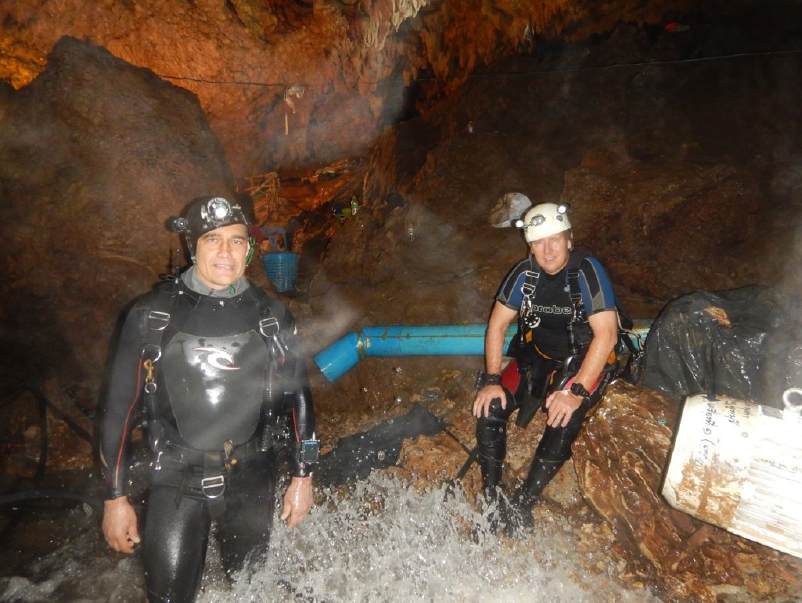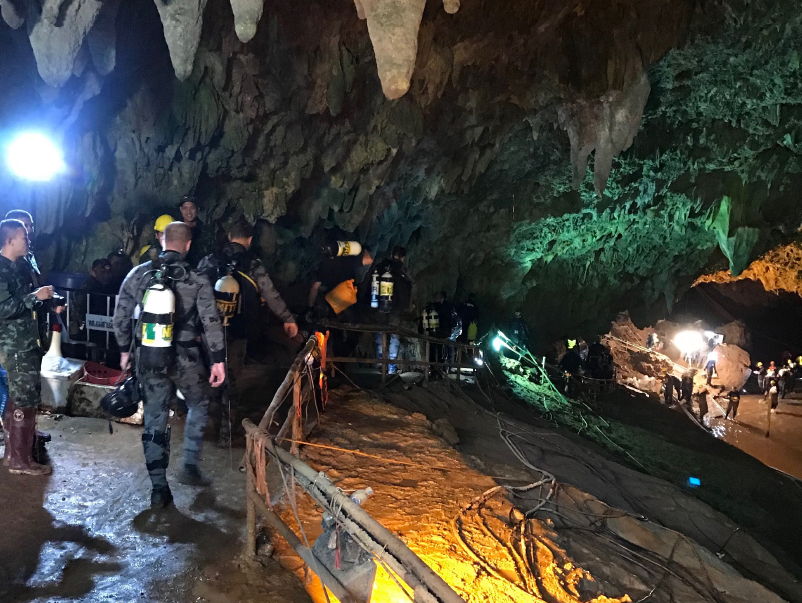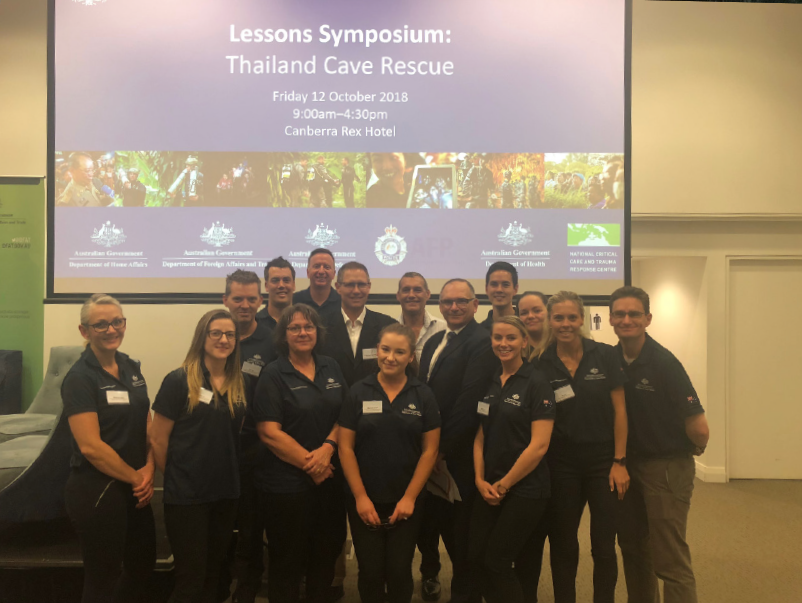The rescue of 12 boys and their soccer coach from a flooded cave in Thailand was an extraordinary story of human endurance that captivated hearts and minds around the world. One year on, the Australian Government is consolidating its preparedness planning using insights from the experience.
In July 2018, the world watched an unprecedented rescue of the Wild Boars soccer team from Tham Luang Nang Non Cave in Chiang Rai Province, Thailand. Twelve boys and their coach had entered the cave after soccer practice, only to be trapped by floodwaters.
Efforts to locate the group were hampered by rising water and strong currents. The group was not seen for nine days.
A small team of divers from the Australian Federal Police, together with personnel from the Australian Defence Force and Department of Foreign Affairs and Trade, supported the Thai-led search-and-rescue operation. When the boys were found alive four kilometres inside in the cave, it was decided that the only way to rescue them was to sedate and dive them out. Dr Richard Harris, a cave diver and anaesthetist and his dive partner, Dr Craig Challen were asked to assist. They played a critical role in sedating the team, fitting them with dive equipment and working with other divers to evacuate the boys through the cave system to safety.
In the end, it was a rare and extraordinary triumph. Rescue workers raced against time and nature, operating in a dark, claustrophobic and unfamiliar cave complex. This was a rescue that went far beyond the demands of normal cave diving. After 18 days trapped underground, the group was safely evacuated.
The rescue was a remarkable illustration of regional and international cooperation. Under the leadership of the Royal Thai Navy Seals, rescue crews from Australia, China, the United Kingdom and the United States of America worked in close partnership to ensure the safe return of the boys and their coach.
Thai Cave Symposium
In late 2018, Emergency Management Australia hosted the Thai Cave Symposium, bringing together over 100 representatives from government, the emergency management sector and the diving community. Attendees were fortunate to have speakers share their personal observations, reflecting on the coordination, leadership, decision-making and complexity of the rescue operation.

Specialist divers, Dr Craig Challen and Dr Richard Harris formed part of Australia’s assistance. Image: Department of Home Affairs
The symposium provided a unique opportunity to share key learnings from the rescue. Reflecting on observations, an expert panel then led a domestic scenario discussion to explore how Australia might respond and manage the complexities of this type of rescue at home.
The scenario, set in a cave system in remote part of the Eucla district in Western Australia, emphasised the importance of building technical dive capabilities through accredited training. It also highlighted the complexity of quickly accessing overseas expertise and the integration of such international specialist capabilities into Australia’s formal emergency management structures.

The entrance to the Tham Luang Nang Non Cave. Aspects of the cave rescue were used during the symposium scenario to examine how a similar situation might be dealt with in Australia. Image: Department of Home Affairs
Cultural sensitivities, language barriers and legal obligations were identified as important considerations in achieving effective cooperation in a multi-sector, multi-jurisdictional time critical response.
While every crisis is different, the symposium reinforced some fundamental principles:
- Strong leadership, coordination and trusted relationships are key in navigating a complex crisis.
- Recognition of limitations and gaps in capabilities to explore opportunities for innovative solutions, including flexible mechanisms like AUSASSISTPLAN to boost capacity for international responses.
- Training and scenario-based exercising is essential to develop and maintain capabilities to ensure seamless integration into a coordinated response.
- Complex events require consideration or use of civilian, volunteer and specialist expertise.
The sustained media interest in a major crisis requires effective media handling.
Emergency Management Australia is working with agencies and partners to produce a report that summarises observations and insights from the symposium. The report will be shared with agencies to ensure Australia is best positioned to respond to a similar complex event; by repeating what we do well and learning from others and ourselves.

Emergency Management Australia staff with Dr Richard Harris and Dr Craig Challen. Image: Department of Home Affairs
The increasing frequency and severity of crises in Australia demands a multi-agency and multi-jurisdictional approach to prevent, mitigate, respond to and recover from. It is no longer sufficient to consider lessons in isolation. As our emergency management community continues to expand and diversify, we must think of our experiences collectively and share the lessons widely to understand what makes us vulnerable and how we can do better.
The virtue of candid reflection on real events cannot be understated, providing opportunities to learn, grow and discuss unique approaches to enhance our crisis response capability.


